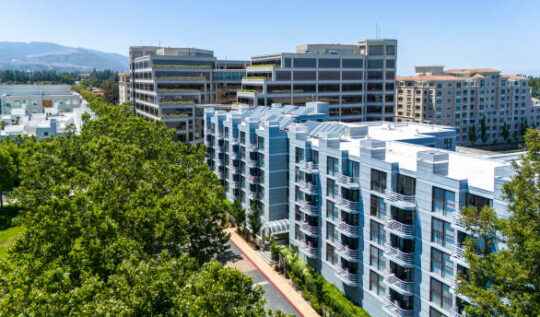Single-Family Zoning in Los Angeles: Challenges and Opportunities for Developers
Los Angeles faces a serious housing shortage. With a rapidly growing population and limited land, city planners, developers, and homeowners are facing tough choices. One of the biggest challenges in solving this crisis is the prevalence of single-family zoning.
Table of Contents
ToggleIn this article, we’ll explore what single-family zoning is, why it matters, the problems it creates, and how consulting firms like JDJ Consulting Group can help clients navigate the complex landscape.
What Is Single-Family Zoning?
Single-family zoning is a type of land-use regulation that allows only one residential unit per lot. In other words, it restricts developers from building duplexes, triplexes, apartment buildings, or other forms of multi-family housing on most residential lots.
In Los Angeles County, a large portion of both incorporated and unincorporated land is dedicated to single-family homes. These areas are often characterized by detached homes, lawns, and driveways. While single-family neighborhoods are popular, they create significant challenges for a city struggling with housing affordability and growth.
🤔 Quick Quiz
Which is not listed as a challenge for developers under single-family zoning?
Source: JDJ Consulting, 2025
The Impact on Housing Supply
Single-family zoning directly limits the number of homes that can be built in a given area. If a lot can only hold one house, the potential for housing density is extremely low.
This restriction has several consequences:
Higher Housing Prices – Limiting the number of homes increases competition for the available units. As demand grows, prices rise. Many Los Angeles neighborhoods now have median home prices well over $1 million.
Reduced Affordability – With fewer units being built, first-time homebuyers and renters struggle to find affordable housing options. High costs push people farther from job centers, increasing commute times and traffic.
Limited Options for Families and Investors – Small families or investors who want to develop multi-unit properties face restrictions, limiting opportunities for creative housing solutions.
Why Single-Family Zoning Exists
There are several reasons why single-family zoning persists in Los Angeles:
Historical Planning Decisions – Much of LA’s zoning was established in the early 20th century when the city aimed to create quiet, residential neighborhoods with space for each family.
Community Preferences – Homeowners in single-family areas often prefer low-density development because it preserves the character of their neighborhood.
Political Influence – Residents in single-family neighborhoods tend to have strong political influence, which makes rezoning politically challenging.
Challenges for Developers
For developers, single-family zoning presents multiple hurdles:
Limited Buildable Land – Many parcels are restricted to one unit, reducing the financial viability of projects.
Red Tape and Permitting Delays – Even in areas where small-scale multi-family housing is allowed, navigating permits and approvals can take months or years.
Community Opposition – Projects that propose changes to zoning often face opposition from local residents, sometimes leading to legal challenges or project delays.
Compliance Costs – Regulations like the California Environmental Quality Act (CEQA) add extra costs and uncertainty to development projects.
These challenges make it difficult to deliver housing quickly, which in turn drives up prices across the region.
Opportunities with Upzoning and Multi-Family Development
Despite the challenges, there are significant opportunities for developers and homeowners who understand how to navigate the system. One key solution is upzoning, which allows building more units in the same parcel.
Upzoning can take several forms:
Allowing Duplexes, Triplexes, and Fourplexes – In neighborhoods where single-family zoning dominates, small multi-unit buildings can provide more housing while preserving neighborhood character.
Transit-Oriented Development – Areas near public transit are ideal for higher-density projects. Building near rail or bus corridors allows residents to live without cars, reducing traffic congestion.
Infill Housing – Developing underutilized lots or replacing old buildings with new multi-family units increases the housing supply without expanding the city’s footprint.
📈 Upzoning Gain Estimator
Note: This is a rough estimate. Source values from JDJ Consulting and typical LA market data, 2025.
JDJ Consulting Group’s Role in Solving Zoning Challenges
JDJ Consulting Group specializes in helping developers, investors, and homeowners navigate Los Angeles’ complex zoning and permitting landscape. Here’s how JDJ can make a difference:
1. Zoning Analysis
Before any project begins, JDJ reviews zoning maps and local regulations to determine what is legally possible on a parcel of land. This includes identifying opportunities for upzoning, mixed-use development, and density bonuses that can maximize the value of a property.
2. Permitting and Entitlement Expertise
JDJ guides clients through the permitting process and ensures that clients comply with all local and state regulations. The team tackles CEQA requirements, enforces building codes, and secures all necessary approvals. By managing the process efficiently, JDJ prevents delays that can extend project timelines by months or even years.
3. Strategic Development Planning
With deep knowledge of urban planning and market trends, JDJ advises clients on where and how to build multi-family or mixed-use projects. This includes analyzing demographic trends, identifying areas with high demand, and planning developments that are both profitable and community-friendly.
4. Community and Stakeholder Engagement
Projects often face opposition from residents. JDJ helps developers communicate effectively with stakeholders, addressing concerns and demonstrating the benefits of new housing. Proper engagement can reduce legal challenges and build public support for projects.
5. Maximizing ROI
JDJ identifies zoning opportunities, navigates regulations, and streamlines approvals to help developers maximize return on investment. The team structures projects to leverage tax incentives, density bonuses, and other programs that make multi-family development financially viable.
📊 Median Home Price vs Unit Density
Source: JDJ Consulting + LA market reports, 2025
Case Studies: Opportunities in Los Angeles
Several recent projects show how developers can successfully navigate single-family zoning challenges:
Expo/Bundy Station Redevelopment – In this area, single-family homes were replaced with 500 new housing units near public transit. The project demonstrates the potential of upzoning in high-demand areas.
Box Store Mixed-Use Projects – Some commercial properties are being redeveloped into mixed-use spaces with apartments above retail. These projects increase housing supply without expanding the city’s footprint.
Infill Housing in Older Neighborhoods – Older LA neighborhoods often have smaller lots where duplexes and triplexes coexist with single-family homes. These projects increase density while preserving neighborhood character.
These examples show that with careful planning and the right expertise, developers can build more housing, reduce costs, and contribute positively to the community.
Policy Considerations and Future Trends
Several policy changes could make it easier to address the housing shortage:
Statewide Upzoning Laws – California has passed laws allowing small-scale multi-family development in single-family zones. This opens opportunities for developers who can navigate the new regulations.
Tax Incentives for Infill Development – Policies that reduce property taxes or provide incentives for underutilized land can encourage redevelopment.
Streamlined Permitting – Allowing third-party review and faster approvals can reduce delays and make projects more financially viable.
Community-Focused Planning – Engaging neighborhoods early and designing projects that integrate with the community can reduce opposition and increase support for higher-density housing.
Conclusion
Single-family zoning blocks the growth of Los Angeles’ housing supply. It increases costs, limits options for residents, and challenges developers. However, those who understand the system can find opportunities.
Developers can make projects viable by using upzoning, transit-oriented development, infill housing, and strategic engagement with city officials and communities. Our consulting firm provides expertise in zoning analysis, permitting, development planning, and stakeholder engagement, guiding clients through these challenges successfully.
Los Angeles cannot rely on building only single-family homes. The city sits on limited flat land, making multi-family and mixed-use developments essential to address housing affordability and meet the needs of a growing population.
By applying the right strategy and professional guidance, developers can create profitable projects that solve some of the city’s most pressing housing problems. JDJ Consulting Group helps clients seize these opportunities, turning zoning challenges into successful developments.
Frequently Asked Questions
Understanding Single-Family Zoning in Los Angeles
▶
▼
What is single-family zoning?
Single-family zoning is a land-use rule that permits only one home per lot. While it helps preserve neighborhood character, it also limits density and housing availability.
- Only one residential unit allowed per parcel
- Preserves low-density communities and suburban feel
- Restricts opportunities for multi-family housing development
- Contributes to limited housing supply in urban areas
▶
▼
Why does Los Angeles have so much single-family zoning?
The prevalence of single-family zoning comes from historical planning decisions and political influence. Homeowners pushed for it to protect property values and limit higher-density projects.
- Rooted in 20th-century suburban planning policies
- Supported by political pressure from homeowner groups
- Reflects community desire to limit density and traffic
- Protects property values but restricts redevelopment opportunities
▶
▼
How does single-family zoning impact the housing supply?
This zoning type reduces the number of homes that can be built citywide. Developers face fewer opportunities, worsening housing shortages and driving up prices for residents.
- Prevents duplexes, triplexes, or apartments in most areas
- Keeps density artificially low despite population growth
- Contributes to citywide housing shortages and sprawl
- Limits investor and developer opportunities for projects
▶
▼
How does single-family zoning affect affordability in Los Angeles?
Restrictive zoning pushes up housing costs by limiting new supply. Renters and first-time buyers face affordability challenges, while developers struggle to create cost-effective housing projects.
- Fewer homes available means higher competition
- Rising demand pushes up both rents and sale prices
- Low- and middle-income families are most affected
- Developers find fewer financially viable opportunities
Key Challenges Developers Face with Single-Family Zoning
▶
▼
What are the main regulatory challenges for developers?
Developers must navigate restrictions, complex approvals, and compliance issues. These hurdles increase costs and make projects less predictable.
- One-unit-per-lot zoning restrictions
- Long entitlement and permitting timelines
- CEQA reviews and environmental compliance
- Fragmented approval processes across agencies
▶
▼
Why is community opposition a significant hurdle for developers?
Local residents often resist new development, fearing negative impacts. This opposition can delay approvals and add costs.
- Concerns about traffic, noise, and congestion
- Strong desire to protect neighborhood “character”
- Homeowners use legal or political channels to resist change
- Can delay projects for months or years
▶
▼
How do costs and uncertainties affect project viability in Los Angeles?
High expenses and delays raise financial risk, making many developments unfeasible.
- Environmental reviews add significant cost
- Long permitting processes delay project timelines
- Financing becomes more difficult to secure
- Increased carrying costs reduce profitability
Opportunities and Policy Solutions for Developers
▶
▼
What is upzoning, and how does it address housing challenges?
Upzoning allows more units per lot, increasing density and supply. It’s a key strategy to tackle Los Angeles’s housing shortage.
- Permits duplexes, triplexes, or fourplexes on single lots
- Increases efficiency of land use
- Supports affordability by boosting supply
- Aligns with sustainable, transit-oriented housing goals
▶
▼
Which areas of Los Angeles are promising for new development?
Transit-oriented and underutilized lots create strong opportunities for developers.
- Transit corridors near rail and bus lines
- Infill lots in established neighborhoods
- Older properties suitable for redevelopment
- Areas aligned with sustainability and growth plans
▶
▼
What policy tools are available to support developers under zoning restrictions?
Several programs help offset zoning limits and costs.
- Density bonuses for affordable housing projects
- Statewide upzoning laws that increase flexibility
- Tax incentives for infill development
- Streamlined approvals that reduce delays
The Role of Consulting and Best Practices in Zoning Projects
▶
▼
How can JDJ Consulting help developers navigate zoning challenges?
Consultants provide expertise to reduce risks, cut delays, and identify opportunities.
- Zoning analysis and entitlement guidance
- CEQA compliance and environmental review support
- Stakeholder engagement to reduce opposition
- Assistance securing density bonuses and incentives
▶
▼
Why is stakeholder and community engagement important?
Early outreach improves approval chances and builds trust with residents.
- Reduces opposition by addressing concerns early
- Helps align projects with neighborhood character
- Prevents costly legal or political challenges
- Builds long-term support for development goals
▶
▼
What is infill housing, and why is it valuable in Los Angeles?
Infill housing uses underutilized lots to add homes without expanding outward.
- Maximizes land use within existing neighborhoods
- Preserves city character while adding housing
- Reduces sprawl and supports sustainability goals
- Offers developers cost-effective opportunities in urban areas
Case Studies and Future Trends in Single-Family Zoning
▶
▼
What are examples of successful projects that overcame zoning restrictions?
Projects show that smart planning and engagement can work despite restrictions.
- Expo/Bundy Station added 500 units near transit
- Mixed-use projects combine housing with retail successfully
- Older single-family lots redeveloped into duplexes or triplexes
- Infill developments balance growth with neighborhood preservation
▶
▼
What future trends could reshape single-family zoning in Los Angeles?
Policy changes and new incentives are likely to redefine zoning over time.
- Broader statewide upzoning laws
- Streamlined permitting processes to cut delays
- Stronger incentives for infill housing projects
- Efforts to balance density with neighborhood preservation





